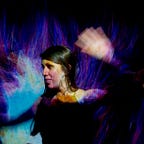COVID-19 Conspiracy Tribes Across Instagram, TikTok, Telegram and YouTube
This is a project I took part in during the Digital Methods Summer school at the University of Amsterdam, June 2020
COVID-19 has become the perfect facilitator of conspiracy theories (Quattrociocchi in Ball and Maxmen, Nature). Social media being used now more than ever, online platforms have become the marketplace for rumours to spread (Bell and Maxmen; Chandra and Pal, 2019). The pandemic has become part of a “hate multiverse” (Bell and Maxmen) which gives fuel to other conspiracy theories and “focuses an initially rather diverse and incoherent set of messages into a few dominant narratives” (Bell and Maxmen).
One feature that makes these networks interesting to analyse is their “capacity to draw in outside users through what Johnson and his team call “wormhole” links. These are shortcuts from a network engaged with quite different issues. The hate multiverse, therefore, “acts like a global funnel that can suck individuals from a mainstream cluster on a platform that invests significant resources in moderation, into less moderated platforms like 4Chan or Telegram” (Bell and Maxmen). As a result, Johnson says, racist views are starting to appear in the anti-vaccine communities, too. “The rise of fear and misinformation around COVID-19 has allowed promoters of malicious matter and hate to engage with mainstream audiences around a common topic of interest, and potentially push them toward hateful views,” his team says in the paper. This “global funnel” effect has turned social media platforms into a vector for hate and “an entry point into the internet’s darkest corners” (Lorenz, The Atlantic).
The DMI Summer School project set out to map various COVID-19 conspiracy tribes, to see what theories they adhere to and how they are connected (including China, 5G, Bill Gates, QAnon, flat earth, and the deep state). Based on our own expertise and available data we looked at four platforms these tribes were known to inhabit: Instagram, TikTok, Telegram, and YouTube.
Using the concept of a “conspiracy tribe” as a heuristic for gauging how online communities produce and consume conspiratorial content in a variety of ever-shifting social media constellations, we wanted to know whether the four platforms saw an increase of engagement with these theories and how this engagement changed over time, in terms of the user base and types of conspiratorial content. Moreover, we sought to test our hypothesis that previously distinct conspiracy theories started to coalesce and converge during the pandemic.
Looking at data from all the platforms, we found that engagement with the aforementioned conspiracy theories remains relatively low when the virus was still contained to China (January/February) but started to increase in March and peak in April/May when COVID-19 became a global health and economic crisis (first in Italy, other European countries, the US and elsewhere).
Each platform analysis also yielded specific findings.
- For Instagram, we found that in January and February COVID-19-related hashtags were present in much lower volume than in March and April when they also started to act as a linchpin bringing disparate conspiracy theories together.
- On TikTok, conspiracy theories appear to spread through individual accounts rather than hashtag labelling and there seems to be a dominance of far-right and Trumpist conspiracy theory accounts among the content creators.
- For Telegram, we found that different conspiracy theories dominate the discussion at different moments (China initially, later 5G and Bill Gates), but also that content is often engaged within a spirit of mockery rather than true belief.
- Finally, for YouTube, hosting practices and co-appearances incur legitimacy to and increase the visibility of creators, forming a network of influence.
During our analysis of two principal nodes in the network, we found that creators engage with various established conspiracy theories which converge around the coronavirus from January onward. This engagement, however, is suspect, as these creators often adopt promotional techniques common among brand influencers, leveraging their audience into profit.
The full writeup of the results can be found here: https://wiki.digitalmethods.net/Dmi/SummerSchool2020Conspiracytribes
